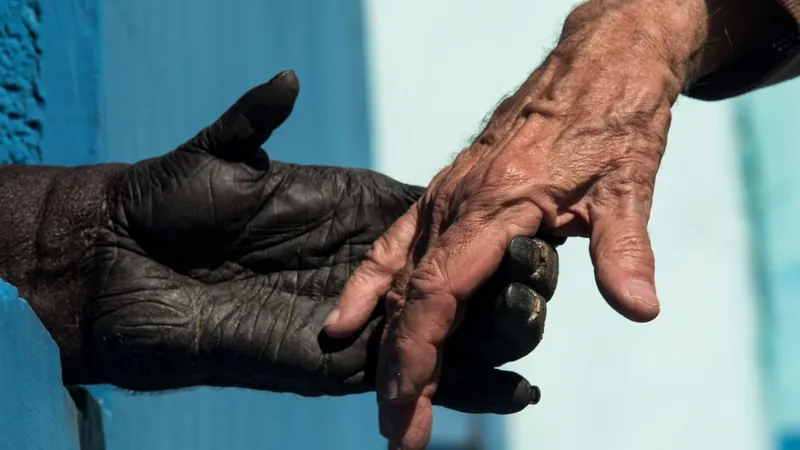
Inmate's Desperation Leads to Violent Attack: More Jail Time and Caning Await
2024-11-01
Author: Ming
SINGAPORE: A violent incident unfolded recently in Singapore's prison system when Karrtik Stalniraj, a 25-year-old inmate already serving time for a robbery, attacked a fellow inmate using an improvised weapon. This shocking event, which draws attention to the ongoing issues of violence in correctional facilities, resulted in Karrtik receiving an additional sentence of three years and two months, along with four strokes of the cane.
Karrtik had been incarcerated for over five years following a robbery at a moneylending shop in Jurong East in 2020. On November 1, 2023, he pleaded guilty to the newer charge of voluntarily causing grievous hurt, leading to his latest punishment. The new jail term will start once his current sentence ends, adding further time to his stay behind bars.
The court proceedings revealed that the conflict between Karrtik and the victim, Kesava Vinayaga Murthi, stemmed from a series of disputes over laundry issues and disruptions during family visits. On December 13, 2022, tensions reached a boiling point when Karrtik, armed with a makeshift blade fashioned from a piece of metal and tape, ambushed Kesava during an interaction with a prison warden. In a shocking act of aggression, Karrtik slashed Kesava's face, inflicting a serious 15-centimeter laceration that resulted in a permanent scar.
The violence observed was not taken lightly in court. Deputy Public Prosecutor Yee Jia Rong highlighted the serious nature of committing such an act within a secure environment like prison, noting Karrtik's troubling history of violence, which includes previous convictions. The prosecution sought a stiff penalty due to the gravity of the attack.
Karrtik's defense attorney attempted to mitigate the situation, describing the altercation as a result of persistent provocations from Kesava, including an incident where Karrtik's shirt was mistakenly washed with blue pants, leading to personal humiliation. Furthermore, the lawyer underscored Karrtik's struggles with Attention Deficit Hyperactivity Disorder (ADHD) but acknowledged that there was no direct correlation with his violent behavior.
The defense also brought to light Karrtik's desire to avoid confrontation, emphasizing that he only raised the issue of his discoloured shirt with prison staff out of a sense of duty, while avoiding direct blame on Kesava. Nevertheless, the proximity of the two inmates made it nearly impossible for Karrtik to escape ongoing conflicts with Kesava, culminating in the distressing attack.
As Karrtik awaits the beginning of his extended sentence, the case raises important questions about inmate safety and the structural challenges within the prison system. With increased attention on the behavioral problems arising from excessive confinement and interpersonal tensions among inmates, this incident serves as a reminder of the multifaceted issues that plague correctional facilities worldwide.
In the end, while Karrtik hopes to rebuild his life after serving his sentence, Kesava is left with the daunting reminder of the events that transpired—both men trapped in a cycle of violence that encapsulates the dark reality of prison life.

 Brasil (PT)
Brasil (PT)
 Canada (EN)
Canada (EN)
 Chile (ES)
Chile (ES)
 España (ES)
España (ES)
 France (FR)
France (FR)
 Hong Kong (EN)
Hong Kong (EN)
 Italia (IT)
Italia (IT)
 日本 (JA)
日本 (JA)
 Magyarország (HU)
Magyarország (HU)
 Norge (NO)
Norge (NO)
 Polska (PL)
Polska (PL)
 Schweiz (DE)
Schweiz (DE)
 Singapore (EN)
Singapore (EN)
 Sverige (SV)
Sverige (SV)
 Suomi (FI)
Suomi (FI)
 Türkiye (TR)
Türkiye (TR)